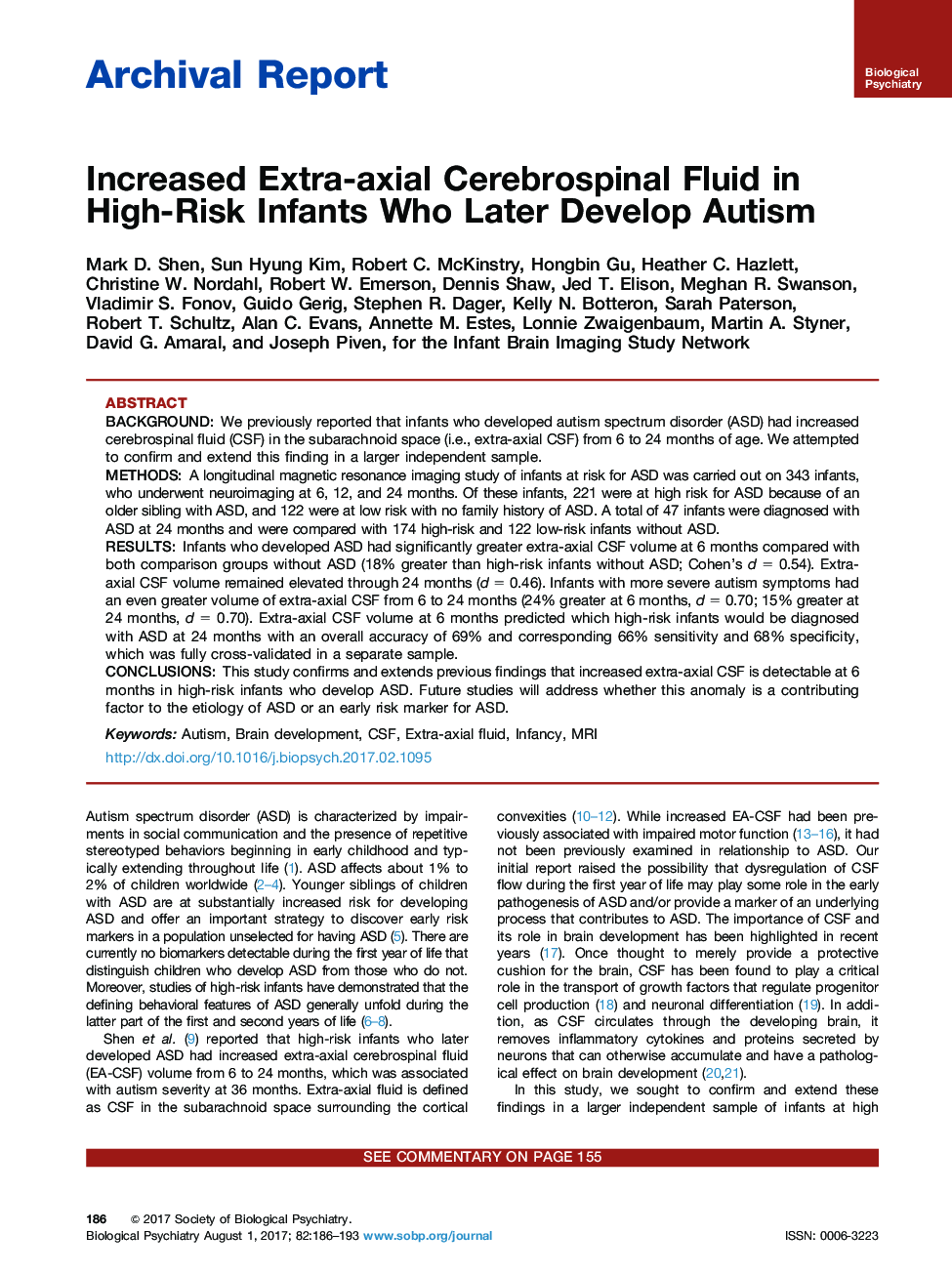| کد مقاله | کد نشریه | سال انتشار | مقاله انگلیسی | نسخه تمام متن |
|---|---|---|---|---|
| 5720776 | 1411328 | 2017 | 8 صفحه PDF | دانلود رایگان |
BackgroundWe previously reported that infants who developed autism spectrum disorder (ASD) had increased cerebrospinal fluid (CSF) in the subarachnoid space (i.e., extra-axial CSF) from 6 to 24 months of age. We attempted to confirm and extend this finding in a larger independent sample.MethodsA longitudinal magnetic resonance imaging study of infants at risk for ASD was carried out on 343 infants, who underwent neuroimaging at 6, 12, and 24 months. Of these infants, 221 were at high risk for ASD because of an older sibling with ASD, and 122 were at low risk with no family history of ASD. A total of 47 infants were diagnosed with ASD at 24 months and were compared with 174 high-risk and 122 low-risk infants without ASD.ResultsInfants who developed ASD had significantly greater extra-axial CSF volume at 6 months compared with both comparison groups without ASD (18% greater than high-risk infants without ASD; Cohen's d = 0.54). Extra-axial CSF volume remained elevated through 24 months (d = 0.46). Infants with more severe autism symptoms had an even greater volume of extra-axial CSF from 6 to 24 months (24% greater at 6 months, d = 0.70; 15% greater at 24 months, d = 0.70). Extra-axial CSF volume at 6 months predicted which high-risk infants would be diagnosed with ASD at 24 months with an overall accuracy of 69% and corresponding 66% sensitivity and 68% specificity, which was fully cross-validated in a separate sample.ConclusionsThis study confirms and extends previous findings that increased extra-axial CSF is detectable at 6 months in high-risk infants who develop ASD. Future studies will address whether this anomaly is a contributing factor to the etiology of ASD or an early risk marker for ASD.
Journal: Biological Psychiatry - Volume 82, Issue 3, 1 August 2017, Pages 186-193
